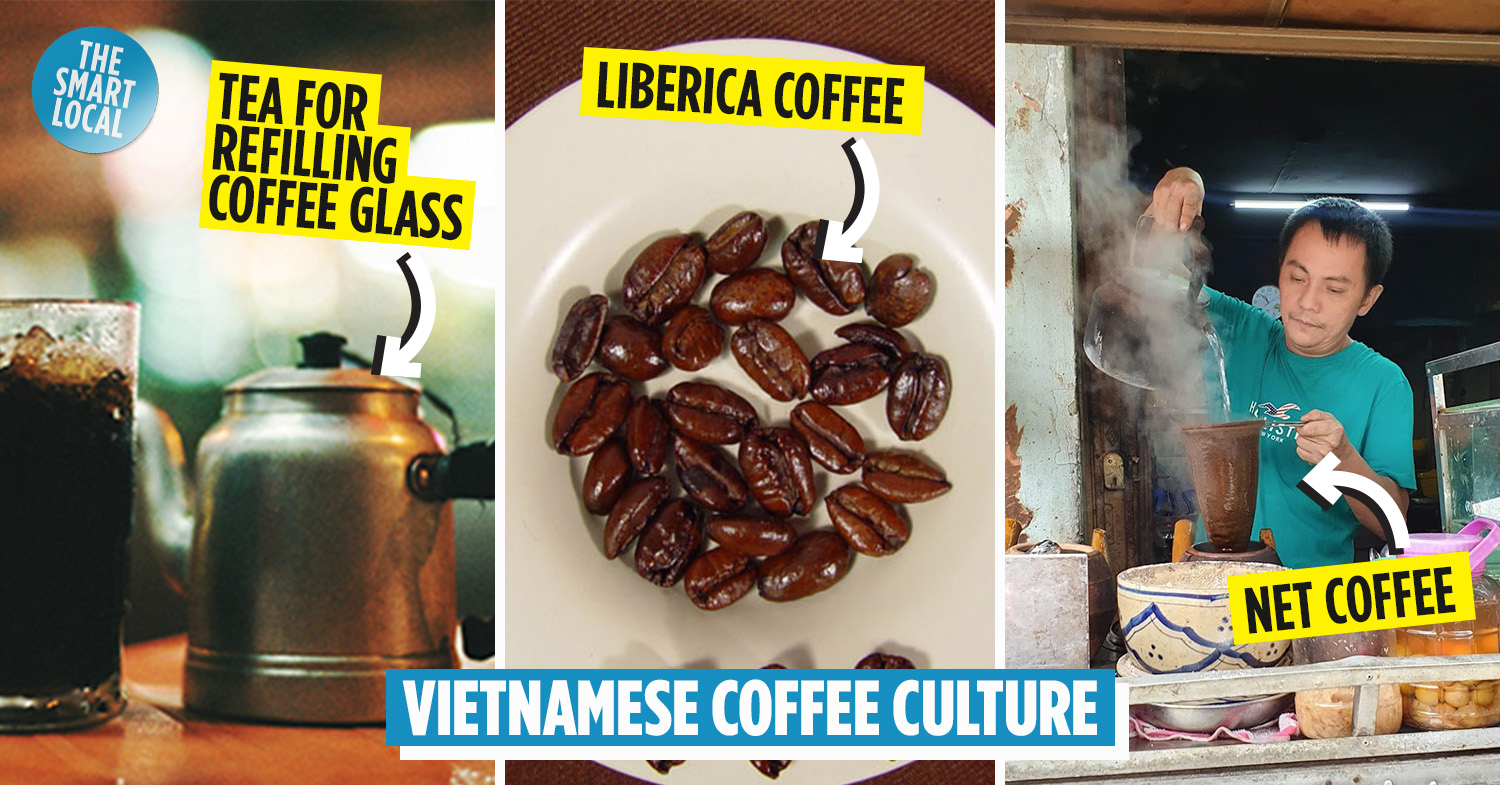Facts about Vietnamese coffee culture
Vietnam is the second-largest exporter of coffee in the world, just after Brazil. According to the book Coffee Obsession published by DK, the country provides 14% of the world’s coffee, so it’s likely that you may have tasted the strong and pungently bitter flavour of this iconic drink.
However, here are some interesting facts about Vietnamese coffee culture that you may not know, and that proves why the culture of Vietnamese coffee is far more interesting than just the super-strong cà phê sữa đá.
1. Coffee has been in Vietnam for around 200 years
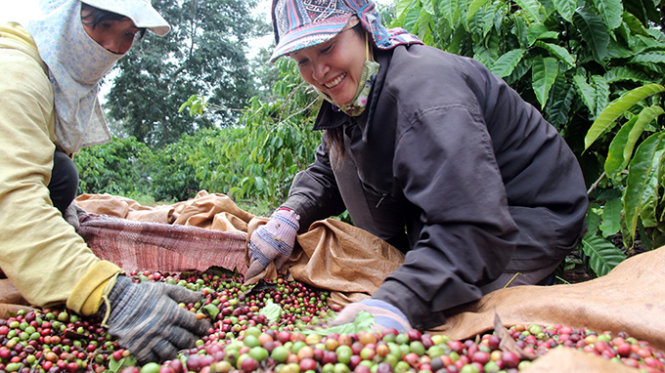
Vietnamese farmers harvest coffee beans in the Central Highlands.
Image credit: Tuổi Trẻ
You may be surprised that the staple drink of Vietnam is actually not native to Vietnam. In fact, it was French Jesuit priests who introduced coffee to the country in 1857.
The first coffee plantation was established in Hà Nam, northern Vietnam in around the 1800s. Since then, coffee production in Vietnam developed quickly in the 1900s. In other words, coffee has just existed in our country for around 200 years, compared to the thousand-year history of tea in Vietnam as recorded in ancient history and legends.
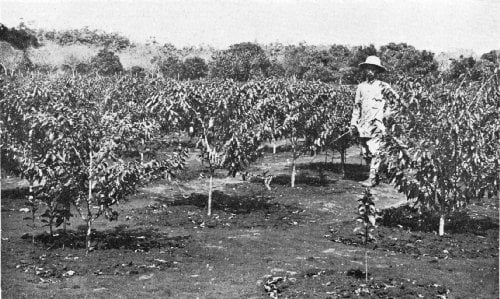
The Arabica coffee plants cultivated in 1922 Indochina
Image credit: The Gutenberg Project
The western origin of this drink is somehow reflected in the way Vietnamese refer to this drink. The name “cà phê” is also a loanword from the French word café.
2. Vietnamese robusta coffee is dark, thick, and strong
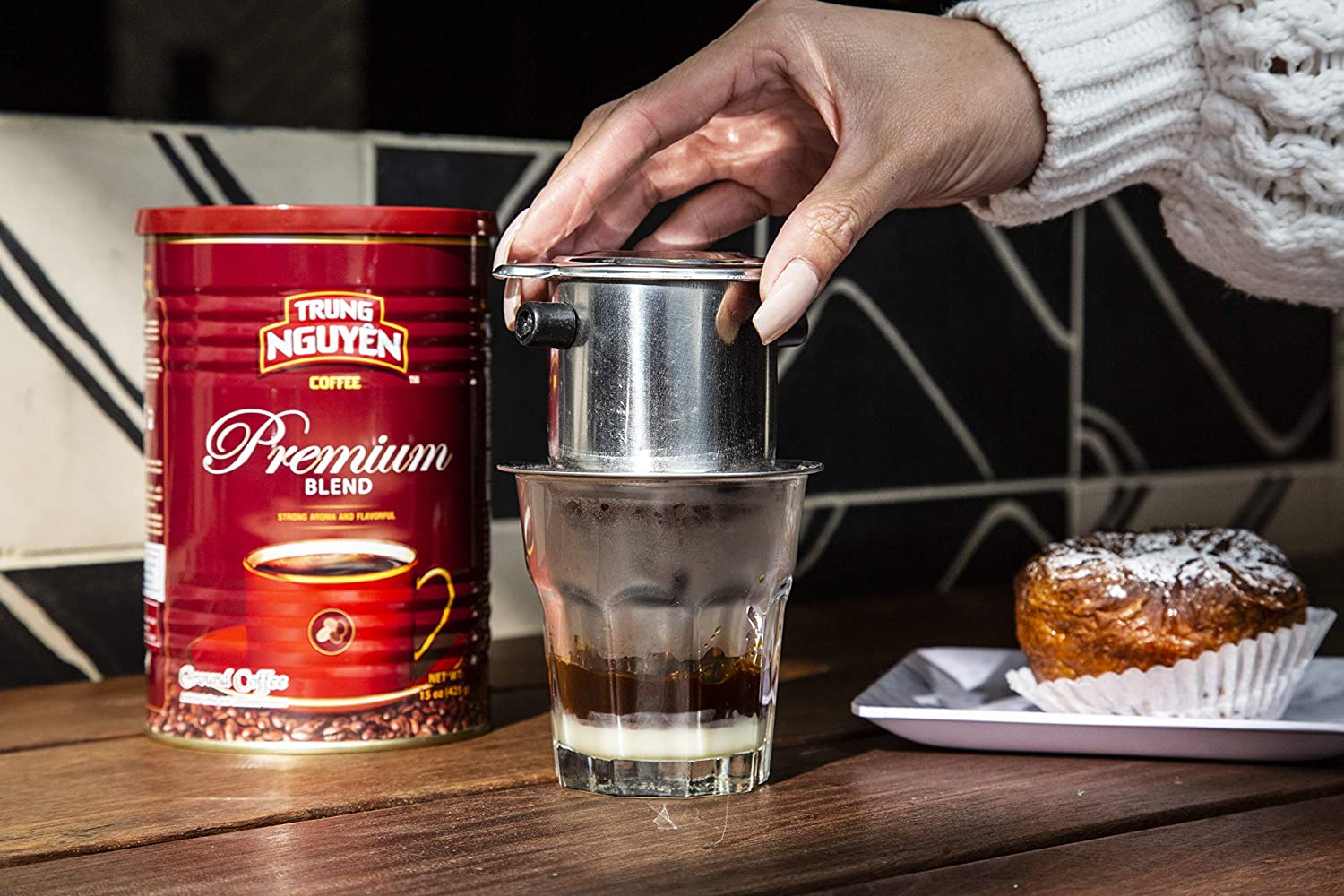
Trung Nguyen coffee, a popular brand
Image credit: Ubuy.vn
Vietnamese coffee is woodier and more caffeinated because it is mostly robusta (also known as canephora or cà phê vối as the Vietnamese call it). As the name suggests, this variety of coffee is robust, less acidic, and more aromatic than the arabica one. It is also cheaper than milder arabica (cà phê chè).
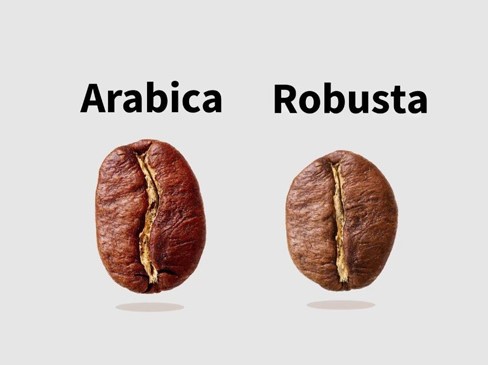
Robusta beans commonly grown in Vietnam have a rounder shape than their Arabica ones.
Image credit: HatA Cafe
It’s likely that the Vietnamese grow mostly robusta coffee because it is easier. For one, robusta coffee trees resist diseases, fungi, and insects better than arabica trees, and also thrive better in Vietnam’s altitude and weather conditions. Robusta, after all, grows best at from 0 to 900m above sea level.
On the other hand, arabica coffee plants require higher altitudes from 900 to 2000m above sea level and frequent heavy rainfalls. It’s still grown in Vietnam, but not as commonly.
3. You can find the less popular liberica coffee in Vietnam
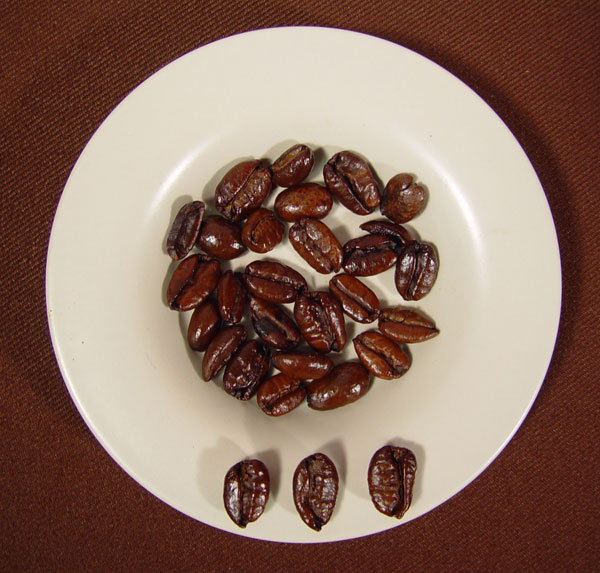
Liberica coffee beans are asymmetrical, which distinguishes them from other varieties.
Image credit: HaztechGuy/Wikimedia Commons
Apart from these common types of coffee, Vietnam also has a small area that grows a lesser-known variety as liberica, formerly known as excelsa, or cà phê mít in Vietnamese.
This variety is quite distinctive from the others. In fact, the shape of liberica beans is not oval or round like those of arabica and robusta respectively but asymmetrical like a hook. Their flavour is also more acidic compared to the typical Vietnamese coffee.
4. Vietnam also has specialty Arabica coffee
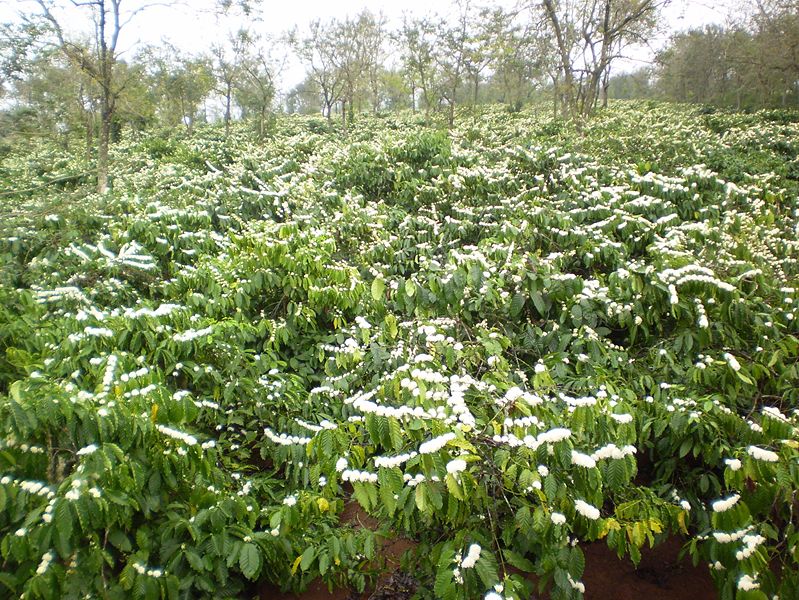
Coffee plants in Vietnam’s Central Highlands
Image credit: DXLINH/Wikimedia Commons
You can enjoy high-quality Arabica coffee when visiting three main areas of production of this variety in Vietnam: the Central Highlands, Northwestern Highlands, and Northern Central Vietnam. In particular, you can head for some specialty coffee in Cầu Đất, Khe Sanh, or Điện Biên.
If you visit the Central Highlands, especially Dalat, you can explore the whole process of making coffee at Cầu Đất Farm. Located about 1,600m above sea level with a mild climate, Cầu Đất offers some of the more top-notch arabica coffee beans in Vietnam.
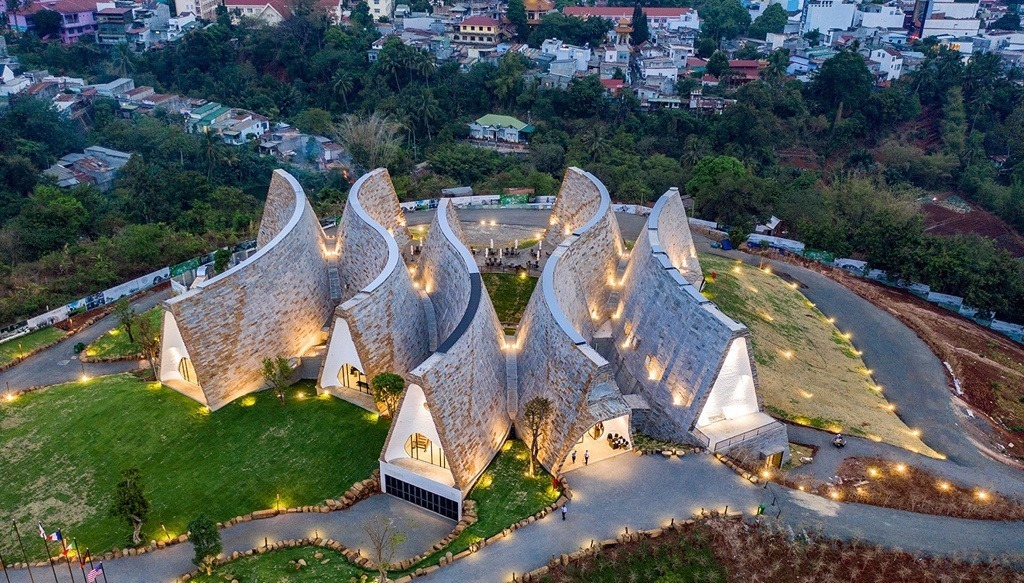
A museum dedicated to coffee has also been established in Đắk Lắk, another Central Highlands province famous for this drink.
Image credit: Người Đắk Lắk
Similarly, the production of arabica coffee is also developing rapidly in northern central Vietnam, including the provinces of Thừa Thiên – Huế, Nghệ An, Thanh Hóa, and Quảng Trị. The most notable specialty coffee of this region is grown at Khe Sanh, Quảng Trị. Because this region is walled by the Annamite Range and receives lots of monsoon wind, it is quite favourable for arabica to grow there.
Going northward, you will find tasty arabica coffee in mountainous northwestern Vietnam. Together with the year-round cool climate, this makes the northern provinces of Sơn La and Điện Biên ideal places to produce high-quality Arabica beans.
5. Huế’s salt coffee is a uniquely Vietnamese recipe seldom found elsewhere
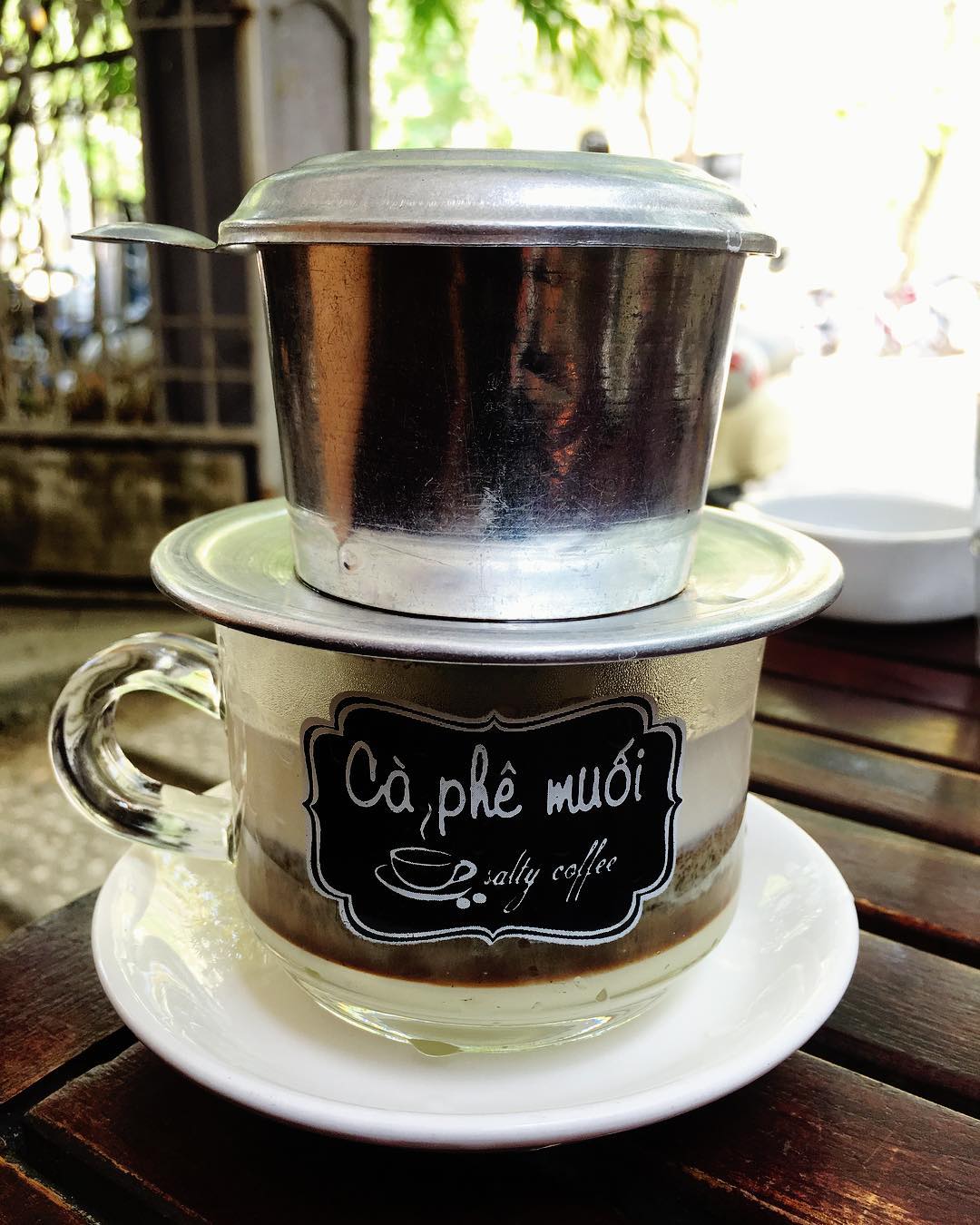
Unlike cà phê trứng (egg coffee) in Hanoi and cà phê vợt (net coffee) in Saigon, cà phê muối was only invented in the 2010s.
Image credit: @laura.chira
When visiting Central Vietnam, don’t forget to try some cà phê muối, or salt coffee, a staple drink in Huế. Actually, this drink has been around for almost a decade. It first appeared in a cafe on Nguyễn Lương Bằng Street, Huế. Little else is known about its origin.
What makes this drink stand out is the salty foam. To make it, add some salt and condensed milk into some non-dairy creamer. Whip the mixture until it becomes like foamy whipped cream. Then put this mixture on top of layers of condensed milk and black coffee.
The coffee shop where this drink was invented is still open, waiting for you to come and enjoy the authentic salt coffee.
Cà Phê Muối
Address: 10 Nguyễn Lương Bằng Str., Huế City
Opening hours: 6.30AM-11AM & 3PM-10PM, Daily
Facebook
6. Net coffee – an original coffee brewing method of the Chinese Vietnamese
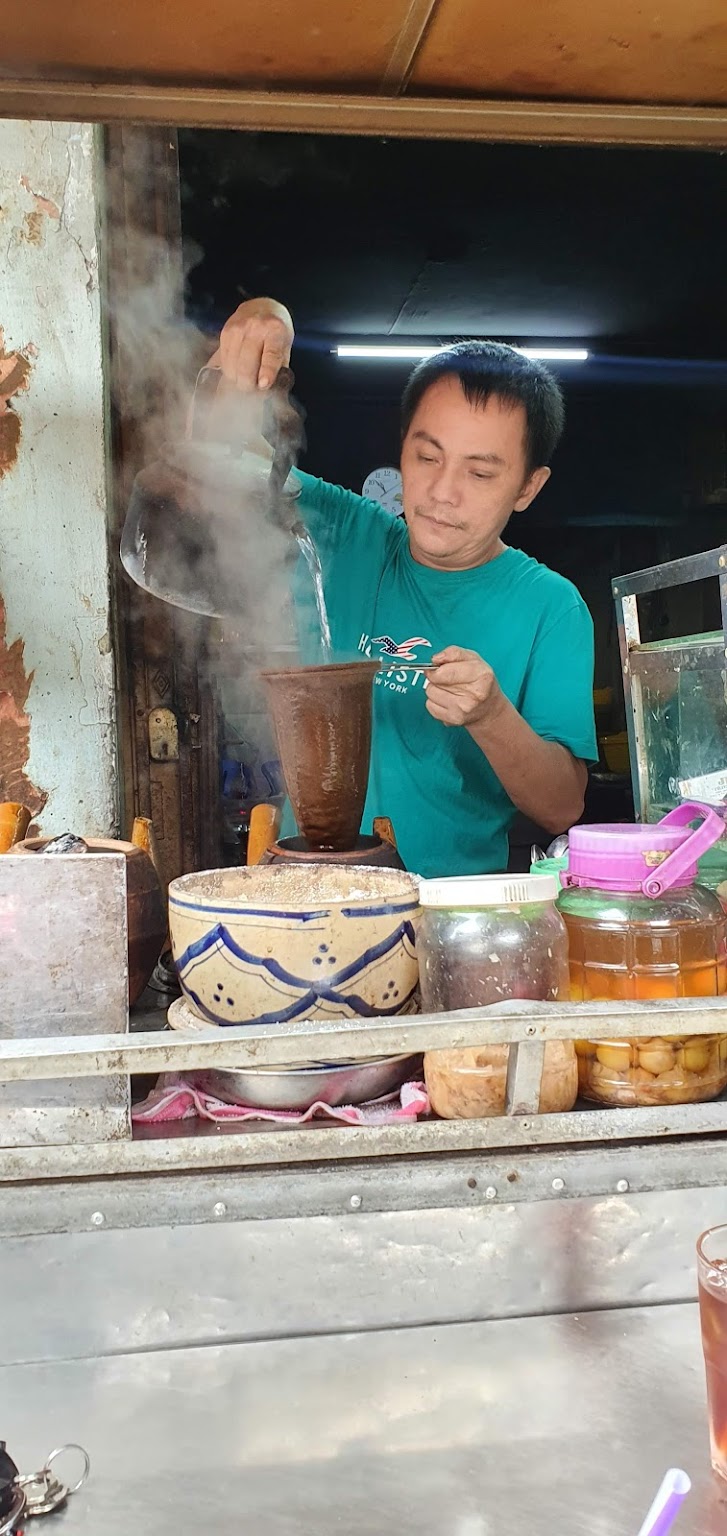
Net coffee is usually brewed with a great amount of coffee in a big pot. This process is very aromatic.
Image credit: An Khang Nguyễn
If you are a caffeine buff, you should try cà phê vợt or net coffee from the Chinese-Vietnamese community here. It is also known as cà phê kho or cà phê vớ, or stewed coffee and sock coffee respectively.
Though other versions can be found in most Chinatowns around the world, Cholon’s net coffee is a subtle combination between Vietnamese coffee and the Chinese traditional brewing method.
Once the brewer has ground the beans carefully, they’ll put the coffee powder inside a net, then dip it into a ceramic pot of boiling water. The result is a thick, smooth, aromatic, and woody coffee. The net coffee is usually milder than that brewed by phin, the typical Vietnamese drip filter made of stainless steel.
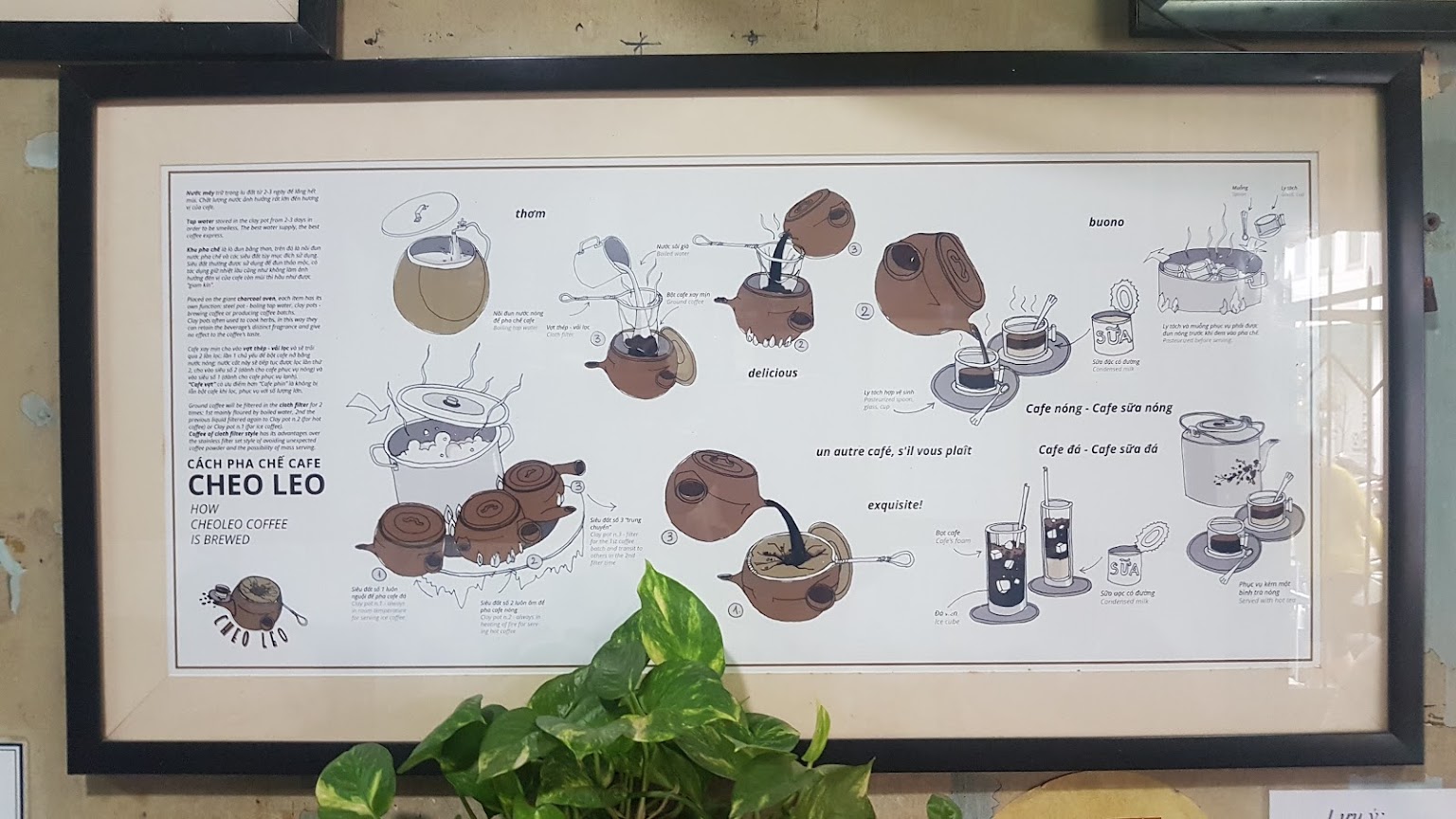
Steps of making net coffee as shown in Cheo Leo Cafe.
Image credit: Jia Ming Kwa
The net coffee shops in Saigon range from 60 to 100 years old, passed down through two or three generations. Hence, visiting these cafes and talking to the shopowners will also be a great way to know more about the neighbourhood’s past.
However, these coffee shops are usually near the marketplaces, so they may be crowded and quite noisy. However, it is a worthy experience to enjoy net coffee while watching the local life.
Cheo Leo Cafe (since 1938)
Address: 109 – 36 Nguyễn Thiện Thuật Street, Ward 2, District 3, Hồ Chí Minh City
Opening hours: 6AM-18PM (Closed on the 1st and the 15th of each month)
Facebook
Cà phê vợt Phan Đình Phùng (since the 1950s)
Address: 330/2 Phan Đình Phùng Street, Ward 1, Phú Nhuận District, Hồ Chí Minh City
Opening hours: All day (ideal for takeaways)
Facebook
Cà phê Ba Lù (since 1953)
Address: 103/5, Nguyễn Tiểu La Street, Ward 5, District 10, Hồ Chí Minh City
Opening hours: All day (ideal for takeaways)
7. Coffee is often paired with tea in southern Vietnam
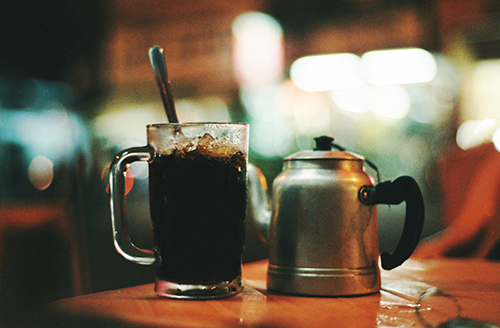
In southern Vietnam, after drinking all of the iced coffee in a glass, people habitually refill it with tea.
Image credit: VnExpress
Whenever you order a cà phê đá (iced coffee) or cà phê sữa đá (iced milk coffee) in southern Vietnam, Saigon for example, the waiter will bring you a small pot of tea. This pot of tea is for refilling the cup after you have drunk all of your coffee and shows how coffee and tea are a favourite pairing in the south.
In Saigon, sidewalk cafes are socialising places for everyone. People gather there in the morning to have breakfast, enjoy coffee, and most importantly, to talk. Sometimes, the conversations may last hours. It’s the teapot that helps them prolong the talk after they have finished the original drink. Even when running out of tea, they can ask for another pot of tea. Guess what? The tea is free.
Southerners also sometimes mix tea and black coffee to make a new drink called trà lai (hybrid tea). This drink combines the harshness of the former and bitterness of the latter to produce an unforgettable taste.
The culture of Vietnamese coffee
When drinking coffee in Vietnam, you’ll not only enjoy our staple drink but also experience an intriguing cultural aspect of the Vietnamese.
Apart from the famous cà phê sữa đá, there are still many other Vietnamese coffee drinks that you can try during your next trip to our country.
Also check out:
- 6 Must-try Vietnamese coffee drinks
- Ănăn Restaurant: Luxurious Vietnamese street food with a twist
- 8 Hanoi teahouses for relaxing gatherings
Cover image adapted from VnExpress, HaztechGuy/Wikimedia Commons, and An Khang Nguyễn
Enjoying The Smart Local Vietnam? Follow us on Facebook, Telegram, Instagram, and LinkedIn for more stories like this. If you have a story to share, email us at pressvn@thesmartlocal.com.
